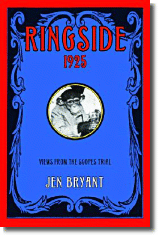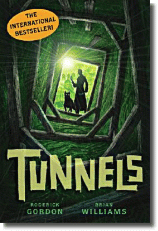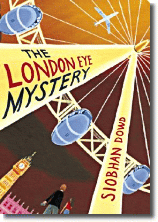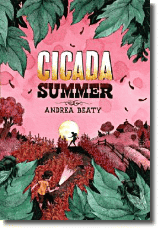In thinking about a post for Valentine’s Day, I thought a lot about who and what we booksellers love. We love good books. We love loyal customers. We love successful author events, extra discounts, delayed billing, and seemingly limitless access to free reading material. AND… we love, love, love our sales reps. From what I’ve gleaned in my conversations with other booksellers, almost all of us love almost all of them. I think these often unsung heroes of the book world deserve a little praise and a lot of love on Valentine’s Day (and every day), so I’m listing here the qualities that apply to the best of them and make them so valuable to the work of we booksellers AND (whether you know it or not) to the work of you publishers, authors, and illustrators too.
Sales reps are useful. For booksellers, your rep is often the only consistent human link you have to a publishing house. When you have a problem with an order, you call your rep. When you’re particularly interested in hosting a certain author, you call your rep. When you want to be sure your newsletter blurb can be pre-approved for co-op, you call your rep. And so on, and so on. If there’s a phrase I hear spoken more consistently than any others by our sales reps, it’s "I’ll see what I can do." And, in almost all cases, they get back to you with an answer, a solution, a name, a number, a something helpful. Amazing.
Sales reps are knowledgeable. They’re knowledgeable about their books, knowledgeable about our stores, knowledgeable about their companies’ policies, and knowledgeable about US, meaning "we booksellers," meaning "actual people." I don’t mean to suggest that the reps who call on me, specifically, all know my birth date, my grandparents’ names, and whether or not I’ve cut my hair since they last saw me (though many of them do). They know things instead that are considerably more useful and a testament to their abilities to both listen and intuit well: they know what I generally like, they know what I’m likely to buy, they know what our store generally sells, they know the other booksellers I admire, and they know the best ways to approach me. This may not seem like much, but it makes both their job and mine infinitely easier, and it makes our buying sessions incredibly smooth.
Sales reps are respectful. They don’t insult buyers’ intelligence by "selling" to us or by pushing us to purchase books we’re unlikely to sell to our customers. When I sit with a rep and we’re going through a catalog together, he or she will give me what extra "beyond the catalog" information they have about a title, answer my questions about it, express their honest opinions about it (if they’ve read it), or tell me the buzz it’s getting in-house, then accept my decision of "2" or "5" or "37." If they are genuinely concerned that I’m selling myself short on a title — if, for example, they think a book is going to get a LOT of media attention, they think there’s a particular market this book might fit that I haven’t considered — they might suggest that I take a chance on a title I was inclined to skip or recommend that I increase their order. But they do this only when they REALLY feel it’s in our store’s best interest, and they probably don’t do with more than a couple titles on any season’s list. Why? They respect my abilities, as a buyer, to purchase what I think my customers will want; and they respect that every store has a budget that (believe it or not) does ultimately have its limitations.
Sales reps are honest. They don’t walk the corporate "marketing" line and sound like catalog copy. In other words, they concede that some of the titles on their list are MUCH better than others. A sales rep who is good to me is a sales rep who… (brace yourselves) tells me which titles I can skip.
I know, I know! Many of you authors and publishers just gasped in horror, thinking "NOT MY SALES REPS!!" But it’s true. If your sales rep is worth their salt (which most of them are, at least in the case of those calling on our store) they will not waste a buyers’ time or money, filling their shelves with books that don’t fit their market. If I’m uncertain about a novel, because I’ve never read it, and a sales rep thinks it’s not going to appeal to the readers in our store’s community, they are 100% right in telling me to move on and spend my money elsewhere. By doing this they save my time, earn my trust, and increase the likelihood that I’ll then take their advice later and increase my order on a different title, or take a chance on something I wouldn’t have considered if I didn’t trust their judgment. No buyer CAN or SHOULD buy every book on a publisher’s list. Especially not with output increasing by substantial margins every year. A good sales rep, then, is one who will help you separate the wheat from the chaff. (And, let’s be honest: we all know that in any given season the book world publishes plenty of chaff.)
If you’re now panicking, imagining that your sales reps are now instructing all buyers in all stores to skip the same books, worry not. Refer to my remarks after "our sales reps are knowledgeable." The same book a rep tells me to skip might be a book they encourage another buyer to buy in bulk. Again, they know our stores, they know our sales histories, they adjust their recommendations accordingly.
Sales reps are readers. You’re probably thinking, "But they HAVE to be." They do have to read a large number of the books on their list, yes, but they don’t have to be "readers." Nevertheless, with very few exceptions, they are. And that’s what makes them passionate about what they’re selling and eager to pass that enthusiasm along to the rest of us. What we do with our customers while handselling, sales reps do with us in our buying sessions — they make us want to buy the best titles on their list, and much more convincingly than any publisher’s catalog ever could.
Sales reps are hard-working. And I mean physically, intellectually, and paper-worky. Some of our commission reps show up with (no exaggeration) four or five cases or crates or suitcases of book samples for us to go through. They haul these loads in and out of bookstores ALL OVER their region, sometimes to multiple stores in the same day, and haul them all out again after each appointment. They write up and submit paperwork or computer files to each of the 12 or more publishers they represent for each of the stores that they visit, either before or after they’ve been in their cars for hours at a stretch, driving from store to store, state to state, to talk about the exact same books they’ve just talked about at 18 other stores in their region. Despite the fatigue that must result from that toil, they almost always show up on time for their appointments and betray no fatigue with the fact that you’re the third buyer in a row to gripe to them about the cover of the lead title on their list, or complain that their publisher was perpetually out of your favorite title throughout the holiday season.
Sales reps are friends. With us, I mean. We build relationships with these people who slog through slush to bring us their kits and catalogs season after season. We sit across from or beside them, for several hours at a stretch in some cases, doing little else but talking about books. But it’s amazing how many other topics slip easily into that conversation, and how much you learn about one another after years of exchanges of this kind.
Sales reps are good listeners and worth listening to. It’s true that as a bookseller I see a lot, opine a lot, and often long for a way to give feedback, in some form, to the publishers of the books I see every day. So, I share observations and raise questions with my sales reps, with whom I know I can be candid. My sales reps move o
n
to other stores where other booksellers do exactly the same thing. The season progresses, the trend continues, and a sales rep becomes a valuable repository of ideas and opinions that could quite possibly help a publisher shape a marketing campaign, reinvent a failing book cover, and reverse a negative trend or two. In this way a sales rep who is valuable to booksellers is valuable to publishers too. And authors. And illustrators. And anyone trying to figure out how best to get good books into people’s hands.
Sales reps are loved. At least, they are at our store. And I hope most you booksellers reading this have found cause to love your sales reps too.
Happy Valentine’s Day!


















